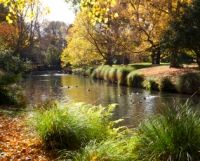

A dirty dozen of non-native animals and plants threatening Britain's rivers and canals have been named.
British Waterways said all 12 species were released after being bought as pets or ornamental pond plants and quickly spread because they had no predators in the UK. The body, which is responsible for 2,200 miles of rivers and canals, is now urging people to dispose of any invasive species responsibly.
It spends about £1million a year trying to repair damage caused by the invaders. Invasive species can cause problems because they are normally bigger, faster growing or more aggressive than native ones and are often resistant to traditional methods of control.
The dirty dozen include Chinese mitten crabs, which burrow into and undermine river banks, and red-eared terrapins, that eat ducklings and can grow as big as dinner plates. They became popular during the Teenage Mutant Ninja Turtles craze about 20 years ago.
Ecologist Chris John said, "In their native countries these particular species are kept in check by nature. Whilst not all non-native species are harmful, many pose real problems to our native wildlife, to boaters and to our historic channels, locks and bridges. With no natural predators to control them they can overwhelm wildlife, channels, banks and towpaths. He added, "British Waterways invests a large amount of time and money to protect our canals and rivers through identifying, monitoring and controlling damaging species. This is very costly and diverts resources that could be used elsewhere on the waterway network."
The other animals on the list are American signal crayfish, mink, zebra mussels and zander fish. The invasive plants include Japanese knotweed, Australian swamp stonecrop, Himalayan balsam, giant hogweed, water fern and floating pennywort.